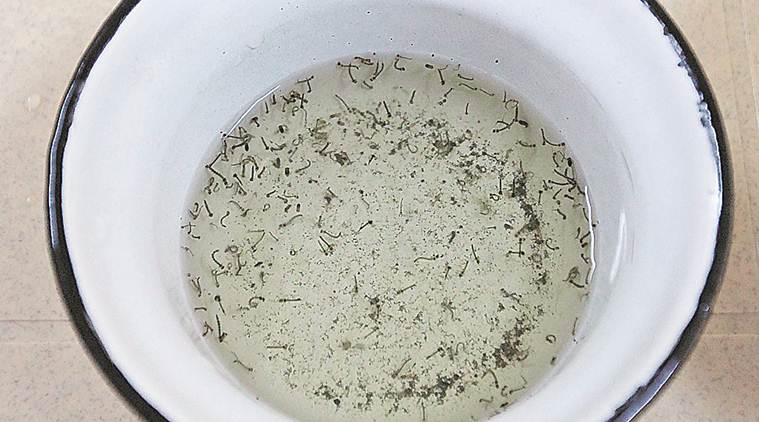
(Written by Pallavi Singhal)
As dengue season approaches, the authorities have become active in conducting surveys of offices and homes in the district. The Civil Hospital, Sector 6, has already handed out at least 250 notices to various government bodies and private homes in the district.
The offices that were sent notices under this drive includes the DC office or the mini-secretariat of the district. The water coolers of offices of DRO, DDPO and DPRO were all drained and cleaned after the health inspection body of the hospital found larvae in their tanks.
During the inspection, the offices whose water coolers are inaccessible were also visited. One such office was the Haryana Argo Industries Corporation in Sector 4 of the district where there was no way the coolers could be accessed. Dr Anita Vasudeva, who heads these operations, says there was no access to these coolers. There was no way we could have checked it.
The total cases of dengue in 2017 amounted to 193, 143 in 2018, and no positive dengue case has been registered this year so far. The authorities expect a further decrease in the number this year.
Fogging
Fogging does not affect these larvae in any form. Fogging only helps in killing the mosquitoes when they come in contact with the fog for at least two hours. Sector-wise fogging is only done by MC and hospital conducts in-house fogging at places where positive dengue cases originate.
Schedule for MC fogging stretches from July to September and MC officially started fogging on July 26.
Reasons
Reasons that are generally noticed in high-risk areas are two. The first is the shortage of water. There are times in areas around Kalka, when water comes every one-three days. The water stored in cans and utensils provides the mosquitoes a perfect breeding ground.
The second reason can be the heaps of dump in areas. These dumps collect water during rainfall in polythene and mosquitoes breed. The hospital promotes three Ks: Kooda (garbage) should not collect, kabbad (junk) should be disposed of, and kapda (full-sleeved clothes and full leggings with socks) should be worn.
Teams working for control
Twelve teams for urban areas and 28 teams for rural areas have been made for source reduction activities by the hospital staff. Dr Anita says it is often found that the slum areas have cleaner coolers than the urban sector. The urban sector is lazy and doesn’t clean.
Control through various methods
Dr Anita says they have been doing this since 1992. “We now concentrate on source reduction activity. We start our transmission program June onwards whereas our awareness programme starts from May itself,” she says.
The larvae of dengue has a serpentile movement and if you put it in a glass it settles at the bottom. The only way to kill this larvae is to throw away the water. The water should not be thrown in other water bodies such as drains but on floor. The larvae dies without the presence of water.
Once larvae becomes a mosquito, it starts living in the dark corners of your houses. It is an intradomestic mosquito and can live, breed and spread inside one house itself. The mosqito also has multiple feeding habits, ie, it does not bite once but several times and thus even a single mosquito can cause dengue to multiple people. The whole district has 121 water bodies that have been identified and we release these fishes in 90 such places. One ‘guppy’ fish can easily eat 100-200 larvae. These fishes die in overpolluted water and are thus only put in 90 water bodies of the total 121.
Mohali records 17 cases this year
The district has recorded a total of 17 cases of dengue from January to July 31. District epidemiologist Dr Shailander told Chandigarh Newsline that in July they issued 133 challans after finding larva in various areas in the city. She added that Nayagaon was declared as a sensitive area and high alert was also sounded in the area as maximum number of larva detection was reported from there.
“We have already deputed our teams. The anganwadi workers were also enrolled this time for keeping tabs on the people who fall sick and have symptoms of dengue,” Dr Shailander said.